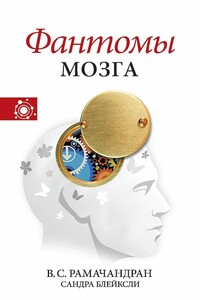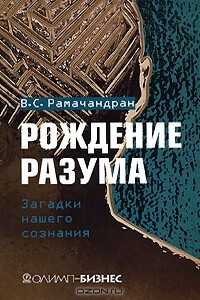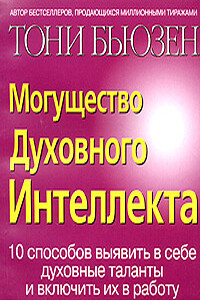8,23–28.
Thioux, М., Gazzola, V., & Keysers, C. (2008). Action understanding: How, what and why. Current Biology, 18(10), 431–434. ‘Tinbergen, N. (1954). Curious naturalists. New York: Basic Books.
Tranel, D., & Damasio, A. R. (1985). Knowledge without awareness: An autonomic index of facial recognition by prosopagnosics. Science, 228(4706), 1453–1454.
Tranel, D., & Damasio, A. R. (1988). Non-conscious face recognition in patients with face agnosia. Behavioural Brain Research, 30(3), 239–249.
‘Ungerleider, L. G., & Mishkin, M. (1982). Two visual streams. In D. J. Ingle, M. A. Goodale, & R. J. W. Mansfield (Eds.), Analysis of visual behavior. Cambridge, MA: MIT Press.
Vallar, G., & Ronchi, R. (2008). Somatoparaphrenia: A body delusion. A review of the neuropsychological literature. Experimental Brain Research, 192(3), 533–551.
Van Essen, D. C., & Maunsell, J. H. (1980). Two-dimensional maps of the cerebral concx. Journal of Comparative Neurology, 191(2), 255–281.
Vladimir Tichelaar, Y. I., Geertzen, J. H. Keizer, D & Van Wilgen, P. C. (2007). Mirror box therapy added to cognitive behavioural therapy in three chronic complex regional pain syndrome type I patients: A pilot study. International Journal of Rehabilitation Research, 30,181–188.
*Walsh, C. A., Morrow, E. M., & Rubenstein, J. L. (2008). Autism and brain development. Cell, 135(3), 396–400.
Ward, J., Yaro, C., Thompson-Lake, D., & Sagiv, N. (2007). Is synaesthesia associated with particular strengths and weaknesses? UK Synaesthesia association meeting. *Weiskrantz, L. (1986). Blindsight: A case study and implications. New York: Oxford University Press.
Wicker, B.Keysers, C., Plailly, J., Royet, J. P., Gallese, V., & Rizzolatti, G. (2002). Both of us disgusted in my insula: The common neural basis of seeing and feeling disgust. Neuron, 40,655–664.
Winkielman, P., Niedenthal, P. М., & Oberman, L. M. (2008). The Embodied Emotional Mind. In G. R. Smith & E. R. Smith (Eds.), Embodied grounding: Social, cognitive, affective, and neuroscientific approaches. New York: Cambridge University Press. Wolf, S. L., Winstein, C. J., Miller, J. P., Taub, E., Uswatte, G., Morris, D., et al. (2006). Effect of constraint-induced movement therapy on upper extremity function 3 to 9 months after stroke: The EXCITE randomized clinical trial. Journal of the American Medical Association, 296,20952104.
Wolpert, L. (2001). Malignant sadness: The anatomy of depression. New York: Faber and Faber.
Yang, Т. Т., Gallen, C., Schwartz, B., Bloom, F. E., Ramachandran, V. S., & Cobb, S. (1992). Sensory maps in the human brain. Nature, 368, 592–593.
Yavuzer, G., Selles, R. W., Sezer, N., Siitbeyaz, S., Bussmann, J. B., Koseoglu, F., et al. (2007). Mirror therapy improves hand function in subacute stroke: A randomized controlled trial. Archives of Physical Medicine and Rehabilitation, 89(3), 393–398. Young, A. W., Leafhead, К. М., & Szulecka, Т. K. (1994). Capgras and Cotard delusions. Psychopathology, 27,226–231.
‘Zeki, S. (1993). A Vision of the Brain. Oxford: Oxford University Press. Zeki, S. (1998). Art and the brain. Proceedings of the American Academy of Arts and Sciences, 127(2), 71-104.
ВВЕДЕНИЕ
Рис. B.l B. C. Рамачандран
Рис. В.2 B. C. Рамачандран
Рис. В. З Из: Brain, Mind, and Behavior, Second Edition, by Floyd Bloom and Arlyne Laserson
ГЛАВА 1
Рис. 1.1 B. C. Рамачандран
Рис. 1.2 B. C. Рамачандран
Рис. 1.3 B. C. Рамачандран
Рис. 1.4 B. C. Рамачандран
ГЛАВА 2
Рис. 2.1 B. C. Рамачандран
Рис. 2.2 Al Seckel (с разрешения)
Рис. 2.3 B. C. Рамачандран
Рис. 2.4 B. C. Рамачандран
Рис. 2.5 B. C. Рамачандран
Рис. 2.6 David Van Essen (с разрешения)
Рис. 2.7 Из: Richard Gregory, The Intelligent Eye (1979), (фотограф: Ronald С. James, с разрешения)
РИС. 2.8 B. C. РАМАЧАНДРАН
Рис. 2.9 B. C. Рамачандран
Рис. 2.10 B. C. РАМАЧАНДРАН
Рис. 2.11 Glyn Humphreys (с разрешения)
ГЛАВА 3
Рис. 3.1 B. C. РАМАЧАНДРАН
РИС. 3.2 B. C. РАМАЧАНДРАН
Рис. 3.3 B. C. РАМАЧАНДРАН
Рис. 3.4 B. C. РАМАЧАНДРАН
Рис. 3.5 B. C. РАМАЧАНДРАН
Рис. 3.6 B. C. РАМАЧАНДРАН




